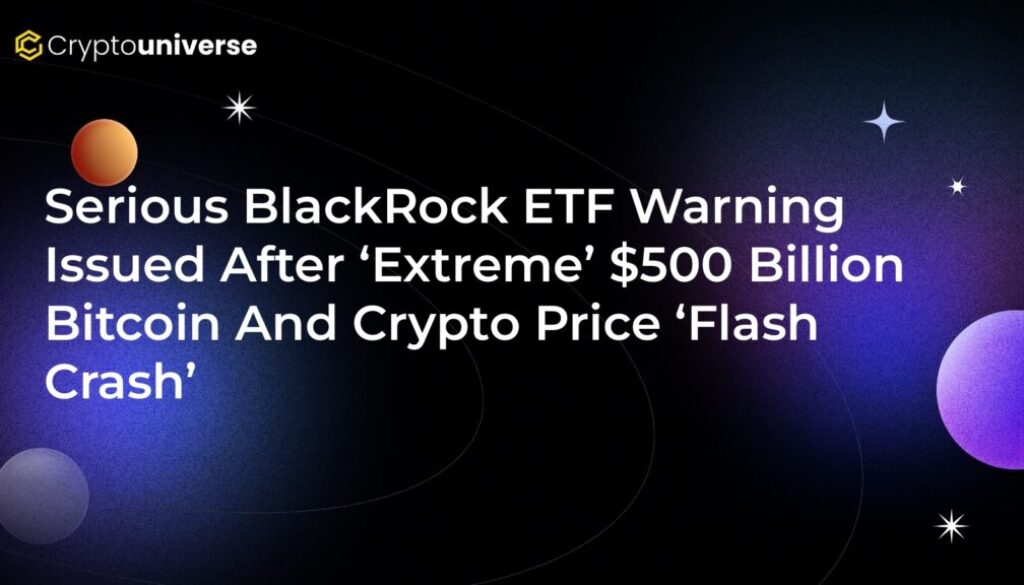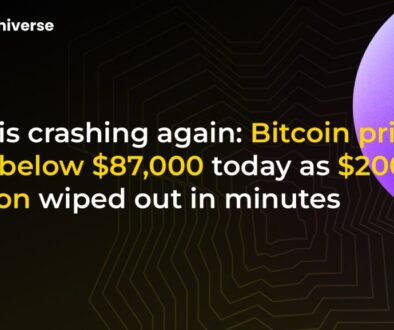Serious BlackRock ETF Warning Issued After ‘Extreme’ $500 Billion Bitcoin And Crypto Price ‘Flash Crash’

Crypto Market Reels from a $500 Billion Weekend Wipeout
The cryptocurrency market was plunged into chaos over the weekend as a sudden and brutal “flash crash” erased over $500 billion in value in a matter of hours. Bitcoin, the market’s bellwether, saw its price plummet from an all-time high of $126,000 to below $107,000, sending shockwaves across the entire digital asset ecosystem and triggering the largest single-day liquidation event in crypto history.
The violent downturn, which saw major altcoins like Ethereum, XRP, and Solana suffer even steeper declines, has left traders and investors reeling. More importantly, the event has exposed a critical vulnerability for the millions of new investors who have gained exposure to Bitcoin through popular spot ETFs, including BlackRock’s nearly $100 billion IBIT fund.
Anatomy of a Meltdown: Record Liquidations and Market Panic
The speed and severity of the crash caught many by surprise. The market downturn was fueled by a cascade of forced liquidations, where leveraged trading positions are automatically closed to cover losses. According to market analyst Lark Davis, the fallout was catastrophic.
“Rarely does the crypto market leave you speechless,” Davis noted, pointing to the staggering “$19 billion in liquidations in the past 24 hours … worse than Covid and worse than [the] FTX”-led market meltdown. “It’s a sad day for the market and a lot of people are hurting.”
Sean Dawson, head of research at Derive.xyz, broke down the initial wave of liquidations, stating, “A flash crash of liquidations saw almost $7 billion wiped across all markets within one hour, with $5.5 billion coming from longs.” The primary trigger for this market panic appears to be a sudden geopolitical development: former U.S. President Donald Trump’s announcement of a 100% tariff on Chinese imports, which reignited fears of a trade war and sent investors fleeing from risk assets.
The After the Crash
While direct crypto holders could trade 24/7 to manage their positions during the weekend turmoil, investors in spot Bitcoin ETFs were left powerless. This is the critical issue that has led to a
When Bitcoin’s price went into freefall, ETF holders could do nothing but watch as the value of their holdings evaporated, unable to sell or hedge their positions until the markets reopened. This highlights a fundamental mismatch between a 24/7 asset class and a 9-to-5 trading product.
Tommy Doyle, Global Head of Relationship Management at Xapo Bank, emphasized the danger this poses to institutional investors.
“The extreme volatility in the price of bitcoin overnight highlights why institutional investors increasingly view access to 24/7 liquidity as essential to prudent risk management,” Doyle explained. “Whilst bitcoin ETFs remain bound by traditional market trading hours, institutional investors with direct bitcoin accounts can continue to access liquidity and risk manage their bitcoin exposure throughout the weekend.”
Carnage or Opportunity? Analysts Divided
In the aftermath of the crash, market sentiment is sharply divided. While many are nursing significant losses, some analysts see the chaos as a potential buying opportunity. Analysts at 10x Research, led by Markus Thielen, acknowledged the panic but pointed toward a silver lining.
“With $8 billion in forced liquidations, altcoins collapsing multiple times more than bitcoin, and funding rates turning deeply negative, the setup is both chaotic—and full of opportunity,” their report stated. Such massive liquidation events can often clear out excessive leverage from the market, paving the way for a healthier recovery.
The crash also occurred against a backdrop of wider macroeconomic uncertainty, with concerning signals coming from oil prices, Treasury yields, and the S&P 500. As the market attempts to find its footing, all eyes are on the next geopolitical or economic development that could either fuel another selloff or spark a relief rally.
For now, the weekend’s events serve as a stark reminder of crypto’s inherent volatility and a crucial lesson for ETF investors about the risks of being locked out of a market that never sleeps.


